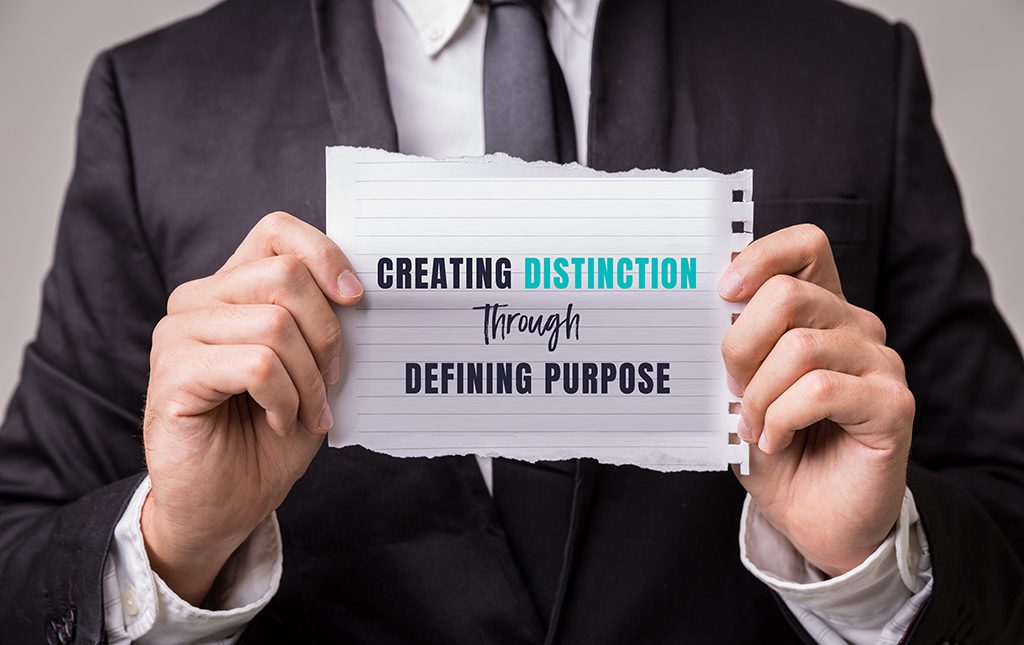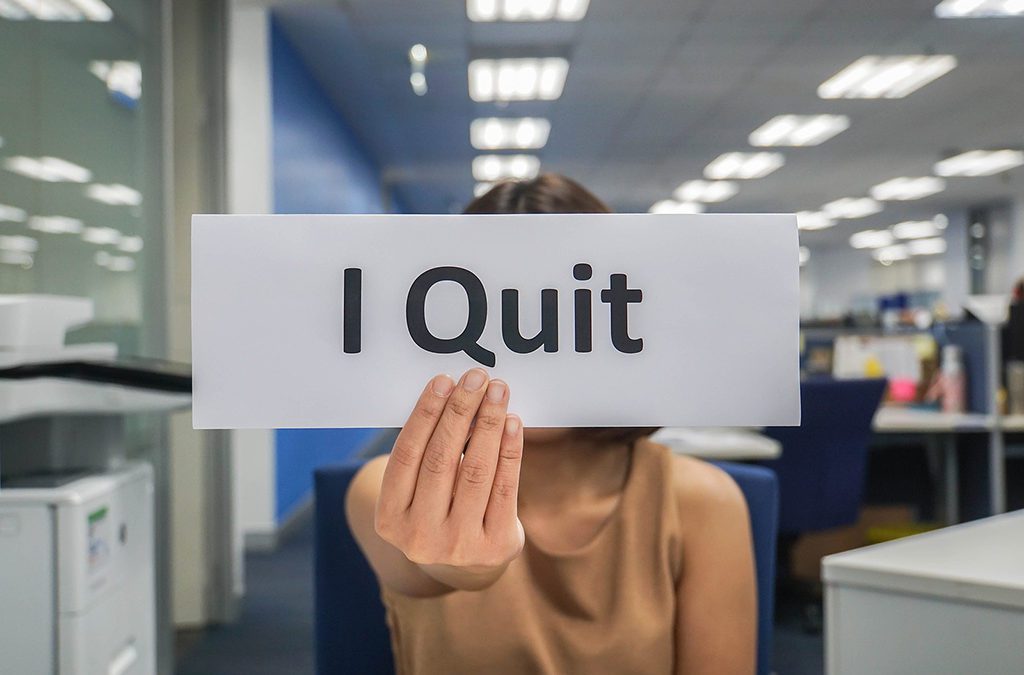
Dec 24, 2021 | Business Distinction, Customer Experience, Leadership, Personal Distinction
When you stop to think about it, the qualities embodied by the spirit of the holidays — a giving attitude, an appreciation expressed to others, and gratitude for your blessings — define how we should treat our customers and team members EVERY day throughout the year.
Giving Attitude
A “giving attitude” is best expressed as the perspective that puts the needs of others above your own. It’s the attitude of being willing to help, to give freely of yourself, and to think of others before yourself. We should bring this spirit to our relationships with both our customers and team members.
When we are open to giving more than we receive, it creates a feeling of joy and abundance. This is the attitude we want our team members and customers to experience. We should think of ways to give more, treat our customers differently, and make them feel special.
Instead of focusing on what we want or need, try shifting your perspective to giving freely to others without expecting anything in return.
Appreciation
Another aspect of the holiday spirit is appreciation. Naturally, we appreciate our customers. However, appreciation also means thankfulness for the team members who make our businesses run. They are the people who serve our customers, package and ship our products, produce and fulfill our orders, deliver customer service, and keep everything organized behind the scenes.
Expressing appreciation to our team members is the only way to show that we value them and their contributions. Keeping it to yourself does no good for anyone! A simple “thank you” can mean a lot, but it’s also important to show appreciation in ways that will be meaningful and memorable. Everyone likes to know that their efforts matter, so take the time to make your team feel valued.
Gratitude for Our Blessings
Finally, gratitude for our blessings is of utmost importance. If we want to grow in the future, we must appreciate how the lessons of the past – good and bad — have brought us to this point. We should also be grateful for our current situation, even if it is not ideal.
Our hearts open when we are grateful, and we become more compassionate. We see the good in life and in others, and this transforms how we interact with them.
Ideas Into Action
To put the spirit of holidays into action, consider these four questions:
- What does appreciation look like in my organization?
- How can I demonstrate appreciation for my team’s past efforts and current contributions?
- What can I do to uniquely express gratitude to my customers through unexpected acts of appreciation?
- How can I increase the joy and abundance in my organization to enhance our organizational culture during the coming year?
When we embody the spirit of the holidays every day in the coming year, we prepare for creating distinction, no matter the circumstances of the economy, pandemic, or unforeseen challenges.
- Apply these insights, and you’ve planted the right seeds for ICONIC achievement in 2022!
(And please keep watching here! We want to partner with you to enhance your professional and organizational growth. Our consulting/coaching/training business is limited to a few select clients each year. I would love to have a conversation with you about how we can work together to help you achieve the distinction you deserve in the coming year!)

Nov 13, 2021 | Business Distinction, Customer Experience, Leadership, Sales & Retail
Employee happiness is a critical factor when it comes to excellent customer service. Employees who are happy with their work — and how their employers treat them — are more likely to care about their customers. This factor is because when employees are treated with respect and engaged, they naturally want what is best for their company.
If employees are happy, it means they will be willing to go above and beyond for their customers — which in turn leads to more delighted customers.
The employee-customer relationship is an essential factor in successful customer service; when companies put their employees first, they find success.
What do employee happiness, employee engagement, and customer satisfaction all have in common? Granted, they are all very similar. However, employee happiness is perhaps most critical.
Employee happiness is the employee’s overall contentment for everything related to their job, including how they’re treated by management and customers alike.
Here’s an aspect easily overlooked: employee happiness has a much more significant impact than employee satisfaction.
Satisfaction is just the employee’s opinion of their current job; happiness means employee contentment for all aspects of their work-life, not just their specific job assignments. Employee happiness means employee engagement.
Here are three ways to improve employee happiness:
- The first step to employee happiness is that there must be buy-in from leadership. If leadership doesn’t care about employee happiness, it won’t go beyond something as minimal as creating a flimsy employee satisfaction survey.
- It is incumbent to communicate with employees how their opinions are vital for improvement and what changes are in process due to their input.
- Decide to make employee happiness/employee engagement an organizational priority. It’s impossible to have employee happiness without employee engagement. A company cannot be engaged with its employees if managers aren’t showing constant commitment to their teams.
- Employees believe that if their manager doesn’t care about the happiness of team members, how can the rest of the organization?
- Offer benefits and compensation that matter. Employee benefits and compensation are essential aspects for employees to feel as though they are compensated fairly for their work.
- It’s difficult to feel valued and under-compensated at the same time. Make sure your wages and benefits also display your commitment to your team.
The more employee happiness there is within an organization, the better the workplace culture will be for everyone involved!
When employees are happy, customers are too.

Oct 31, 2021 | Business Distinction, Customer Experience, ICONIC
At the risk of sounding somewhat like my Dad, who had to trudge to school, in the snow, barefoot, uphill in both directions: Today’s generation of employees want (some would say “require”) something different from the world of work that I never expected.
They want to do work that has meaning. Younger generations now want to know that their efforts for your organization are more purposeful. And they will not be satisfied with work for work’s sake.
Many organizations have a purpose, even one that might be virtuous and laudable. But your organization’s purpose can’t stop at the office door. It has to follow your employees home and inspire them in their personal lives—and it should do so in a way that makes sense from an employee perspective.
This purpose-inspired culture has become so important that it isn’t merely the very top – C-Suite leaders or business owners, for example — that need to buy into it; it has to be shared by all who work for you, managers and non-managers alike.
The organization’s greater purpose needs to leap from job descriptions and company mission statements and flow into employees’ consciousness 24/7, wherever they are.
This purpose-inspired culture will be critical to attracting the best of the Millennial generation (generally accepted as born between 1980 and 1997) and Gen Z (born 1998-2012), who expect meaning from their work–and who have a multitude of employment options. These generations know what they want, even if older generations of leadership and management do not yet know exactly how to help them get it.
Studies show that Millennials and Gen Z are searching for purpose in employment more than anything else–and not merely purpose at work, but purpose with their lives.
To borrow a phrase from the 1930s, purpose is the “New Deal” that young workers seek from today’s world of work.
Some would say purpose is the difference between being “engaged at work” and “having a job.” It is a purpose that engages employees and keeps them focused on their work, producing higher-quality outcomes, and staying committed to the organizations they work for in a manner that ensures they’re present for work tomorrow.
Purpose is no longer solely an HR issue: Purpose has become a business imperative.
From product development and marketing to operations and quality control, purpose is the New Deal. Every department and every business leader should explore purpose for their organizations and how they can market it to not only to Millennials and Gen Z– but also to existing experienced employees who may demand purpose in return for sticking around.
The purpose could be your organization’s mission or a purpose you apply to a specific unit. The purpose could be to do something worthwhile for the community or society at large, which is often a powerful draw for Millennials and Gen Z. Your organization’s purpose should be something that everyone can get behind.
Your purpose is not required to be altruistic, though. It can also be about an improved customer experience or a purpose-inspired product line. Purpose could also validate that your organization is doing something important in its own right, and is something that employees could take pride in delivering for customers.
Your purpose can be to make work more purposeful, which means designing the purpose into the project or taking purpose into consideration for any given marketing campaign.
Your purpose could be to make employees’ jobs easier, not harder, to find new ways to help them get their work done, or to give them time for other pursuits while still performing effectively.
However, here’s a fundamental problem I’ve observed that leaders experience as they attempt to move in this direction: purpose shouldn’t get confused with meaning.
Purpose is a direct result of meaning — purpose is what you do to give your life meaning, or purpose is applying meaning to your work. Purpose may be an immediate objective, but it’s typically not something you bank on for a lifetime.
Meaning is about “an applied purpose over an extended period.” Meaning is what you embrace and believe in for years or even decades.
This purpose/meaning gap can lead to some significant problems. Here are some important questions to assist you:
- What is the meaning behind the products and services your organization provides? What’s it all about?
- How does the purpose of each project or activity — or even daily work — contribute to the organization delivering on its very meaning in the world?
- How does the work of each individual employee serve a purpose that aligns with the purpose of their team, a project, or their daily activities?
- And have you made it abundantly clear how that individual’s work of purpose contributes to the organization’s purpose — which, in turn, creates meaning in the world?
If you can’t answer those questions — or if you haven’t considered them — there’s no way your employees understand their purpose. This means they may be currently searching for an employer who can deliver one, as opposed to you. It’s a primary reason we have seen this “Great Resignation.”
If you desire to be an employer of choice — and consistently remain the employer that top talent chooses to work for — the role of purpose and meaning in your organization should be primary in your efforts to create distinction.

Oct 17, 2021 | Customer Experience
For the first time in my career, the number one problem in business that I consistently hear from organizations is the same, regardless of the industry or size of the company: it’s more difficult than ever to find and retain talented employees.
They seem to be the rarest aspect in business today: the employee who comes in early every day, is willing to stay late, and goes above and beyond what they’re asked to do.
- In other words, the team member with total commitment to the organization’s success.
These employees bring fresh ideas to their role that help them grow within the organization and improve the overall employee experience for everyone else.
There has always been an excellent reason for organizations to work to prevent employee turnover. In fact, in my earliest books from two decades ago, I wrote that employee churn was the most significant overlooked expense for any organization. Employee turnover is an expense of significant dollars for every company. Perhaps even more importantly, there are also costs on employee morale and productivity.
According to Gallup’s 2013 State of the American Workplace, employee turnover expenditures are more than $30 billion a year. Note — this study was conducted eight years ago! As turnover is a key indicator of employee satisfaction, it’s obvious that this is much more impactful to you and your organization now than ever before.
The term for this current challenge in finding and keeping employees is the “Great Resignation.” That phrase was coined by Texas A&M associate professor of management, Anthony Klotz (as reported by Time). The numbers bear out his assertion: — in August alone, 892,000 people quit hospitality jobs, and 721,000 left retail employment.
- So why are so many of these great employees resigning? What are the primary reasons cited for people quitting their jobs?
The answers — and there are several — might not be what you expect. For example, the data proves it’s not the expanded unemployment insurance. (I admit I initially thought that issue was an essential driver of the problem — but the evidence shows it was not a significant factor. More people are leaving their current jobs now than those who quit before the end of the expanded benefits program concluded in September.)
Every organization — regardless of size — must learn that the employee experience isn’t merely about salaries, benefits, and working conditions. It’s most important about an organization’s culture — how people are treated daily within their company walls.
And the employee experience is not always about the employee. It’s also tied to customer satisfaction. It means you must focus on creating an outstanding employee-customer relationship, to ensure that both sides of the company coin (both employees and customers) are satisfied with their product or service.
Here are the three primary reasons employees quit:
- Poor leadership. We’ve said for decades that “customers buy from those they know, like, and trust.” Guess what? The same thing is true for our internal customers. Our employees must know what our organization stands for…they must like the people they work for and with…and they must trust the organization to have their best interests at heart. In today’s world, you must compete for employees with the same passion and precision as you strive for customer acquisition and retention.
- Unfair or poorly managed employee incentives and benefits. Are you confident that your employee perks are in line with what the employee values most? How do you know? If these benefits aren’t congruent with what your employees desire, it can make them feel underappreciated by their company — which can lead to a desire for career advancement elsewhere.
- Finally, employee recognition is another area where employee experience can be lacking. How do you recognize good performance? When I first started in the job market, “employee recognition” was that you got to keep your job and collect a paycheck! Yet, that standard isn’t even “table stakes” anymore…although many employers seem to be operating under the erroneous assumption that it’s good enough in today’s world.
The employee experience is just as necessary as the customer experience, and it’s time for companies to start focusing on what employees really want!
- First, come up with an example of a company that gets employee engagement right. What are some ways that they are going out of their way to improve their employee’s experience?
- Second, how can you adopt or adapt their approach to your business? According to Professor Klotz, we have an opportunity to communicate with our employees and say, “Within the constraints of our business, let’s obviously raise wages and benefits — but let’s also think about flexibility more innovatively.”
- Last, what can you do right now to start this employee experience movement within your organization?
Remember, employee engagement is a process that requires time and commitment. If immediate actions need to be taken in your company, try shifting the employee mindset by using employee surveys or forums.
According to Professor Klotz, “People want a voice – they want to be heard. This is a great way for employees and employers to meet in the middle.”
Our work on the Ultimate Customer Experience® helps organizations create the best for both your internal and external customers. We would love to talk about how we can work with you – as we have with other major organizations – to deliver this type of experience for your team members and those who purchase your products and services.
For more info, simply go to: https://UltimateCustomerExperience.com

Oct 3, 2021 | Customer Experience, Sales & Retail
In a recent conversation with a friend who is a leader in the luxury hotel market, I learned of an aspect his organization is experiencing that stunned me. “We are having significant turnover because our younger employees have decided they do not want to serve people of affluence.”
Let’s discuss what it means that Millennials and Gen Z are now key members of customer service teams. It’s an overlooked aspect of the shortage of superior employees: what happens when employees no longer want to serve your customers?
Here’s my perspective on this: everyone has the right to choose where they want to work and the jobs they want to perform…until they’re hired.
By this, I mean that if I don’t want to mop floors, I have every right to refuse to seek a job as a custodian. However, if I accept a janitorial position, I don’t believe I now have the right to complain when my boss tells me to get out a broom. I can either perform the assigned task — or seek employment elsewhere in another field.
You may ask, “What does this have to do with customer service?”
It’s about perspective. Customers are the most important factor for any business. Years ago, speaker Floyd Wickman published a book with a fantastic title: The Customer Signs Your Paycheck. Too often employees forget who their boss is. They can spend too much time thinking of themselves without a thorough understanding that they are working to ensure customers repeat their business and refer their organization to their colleagues and friends.
In this customer-centric environment, companies must focus on providing a customer experience that goes “beyond the sale” and provides a distinctive level of services.
Today, customer service is the name of the game. Let’s start with some facts:
- 79% of consumers expect companies to provide superior customer care (Vistaprint).
- 40% of Americans say they will not use a company again after one negative customer experience (Siebel Systems).
Unfortunately, customer service has gone downhill over the years.
- 60% of US employees don’t understand or agree with their company’s customer service strategy (American Express).
- Only 25% of customer-facing employees and managers strongly believe they can make a difference in providing excellent customer care (Vistaprint).
The good news is that training your team to deliver world-class customer service isn’t as difficult as you might think. By focusing on key areas, such as recognizing customer needs, understanding customer behavior, and embracing change, you can “set the table” for your team members to deliver the experience your customers crave.
- By the way, we can help you with your organization’s efforts here — just as we are doing with several dynamic and distinctive organizations.
However, today’s generations — Millennials and Gen Z — may need a unique type of education and training from their predecessors. While customer experience training is critically important across all age groups, Millennials and Gen Zs have grown up differently. Their experience comes from an environment where they constantly interact with brands via social media platforms such as Facebook and Twitter. They want to work for organizations that are making a difference in the world and are socially responsible.
For example, my hotel executive friend didn’t simply tell disgruntled employees something that might have been said a few years ago, “If you don’t want to serve the affluent, you can quit now!”
Instead, he talked with them about the cardiologists who were recently guests there for a meeting would now return home better prepared to save lives — maybe even family members of those who worked at the hotel.
He had them envision the couple that has saved for two years to take the perfect one-week vacation — and were guests of their hotel in anticipation of an extraordinary experience. He also reviewed the commitment of the hotel to recycle and other environmentally friendly efforts.
Would this have been a component of his education/training programs a few years ago? Of course not. However, that does not mean it isn’t of critical importance today.
It’s my belief that the employees of my friend’s hotel group weren’t really saying they didn’t want to serve affluent customers.
They were subtly informing their leader that they hadn’t discovered how their work was making a difference. They had not yet been educated on why the experience they were delivering could have a positive impact on their customers, colleagues, and organization.
In other words, the way we show how much our customers matter in today’s world is to begin by educating our teams on how they can make a positive difference. It’s a primary tool we can use to become distinctive in a hyper-competitive marketplace.

Sep 26, 2021 | Business Distinction, Customer Experience, Leadership, Personal Distinction
Here’s a statistic that’s a bit difficult for me to wrap my head around: in July, 4,000,000 people quit their jobs! By the end of July, there were almost 11,000,000 jobs open — an all-time record, according to Harvard Business Review.
As I talk with entrepreneurs and leaders of large corporations, all are singing a similar tune: “It’s tough — almost impossible — to find and keep great people.”
Since the Great Recession of 2008, you have likely been hearing about the “skills gap.” That is, “there aren’t enough trained workers with skills needed to fill open jobs at a time when a record number of them are going unfilled.” But it does not stop there. We hear from constant news reports and analysis about the “Great Resignation” — a tsunami of employees walking away from their employment. It’s a critical challenge for every business, regardless of size.
In the book “Why People Resign: The Great Resignation and What to Do About It,” author Robert Bacal states that his research found eight principal reasons why people quit their jobs. A few of the reasons he discovered were that employees were resigning due to:
- lack of appreciation
- being under-challenged or overly challenged at work
- being paid less than their colleagues.
Bacal’s research discovered that when employees quit, it has much more to do with the overall employment experience than simple matters like salary.
For many years, I’ve been writing and speaking about the customer experience — always pointing out that we need to be equally concerned about the experiences that our internal customers (often called “employees” or “team members”) are having and not focus solely on external customers who buy our products and services.
In my first business book, “ALL Business is Show Business!” over twenty years ago, I wrote:
“The purpose of any business is to profitably create experiences so compelling that loyalty becomes assured.”
Many would read that sentence as advocating an Ultimate Customer Experience® for those who purchase from us — and it does!
- However, it’s also to state the superior importance of delivering an extraordinary experience for internal customers, as well — so their loyalty becomes the result of our efforts.
It’s amazing to me that if an employee quits, walks out of the building, and tries to leave with the company computer she has used during her employment, the manager would call the cops and have her arrested for theft. That same employee, however, can walk out with customer relationships, knowledge of the business, and recipient of an extensive investment in training and education from the company…and most managers just shrug and say, “That’s the way business works today!”
I promise you that it’s more likely their knowledge and relationships are significantly more important to your business than their company laptop!
Yet, you would never know that, because the vast majority of managers are blind to this. Some even think all employees are interchangeable. If they can’t find a good replacement from within, then they just hire from the outside without much thought or consideration for what is really going on.
(By the way — do you know your turnover rate? Do you know the primary reasons that people are leaving your employment? Have you done a bit of research to discover why great candidates aren’t accepting your job offers? Until you take these steps, you probably aren’t going to solve your employment problems.)
The reasons for this are many, but several sources report that the most common reasons people quit their jobs are:
- The work is not engaging.
- Leadership doesn’t care about employees.
- There are no opportunities to advance or grow.
- I don’t feel valued by my employer.
(You can probably think of more. But, please note, salary is not among the primary reasons that people quit.)
You probably have an acquisition strategy for customers — in other words, you’ve planned out how you are going to attract new customers for your business.
- You have one for external customers…how you’re going to get paying customers away from your competition and over to your side; and you probably have a recruitment approach for new employees, as well.
- The problem is that today’s marketplace requires a retention strategy that is engineered with as much passion and precision as your acquisition strategy. What is your detailed plan to keep the customers you have — both internal and external?
In this time where people feel little reticence about quitting a job, planning a distinctive retention strategy for your internal customers may be one of the most profitable steps you make this year.
Want to obtain and retain your customers — both internal and external? You’ll discover how when you join the Iconic Inner Circle. There’s zero risk — your first month is free and you can cancel anytime. Check it out: https://IconicInnercircle.com






